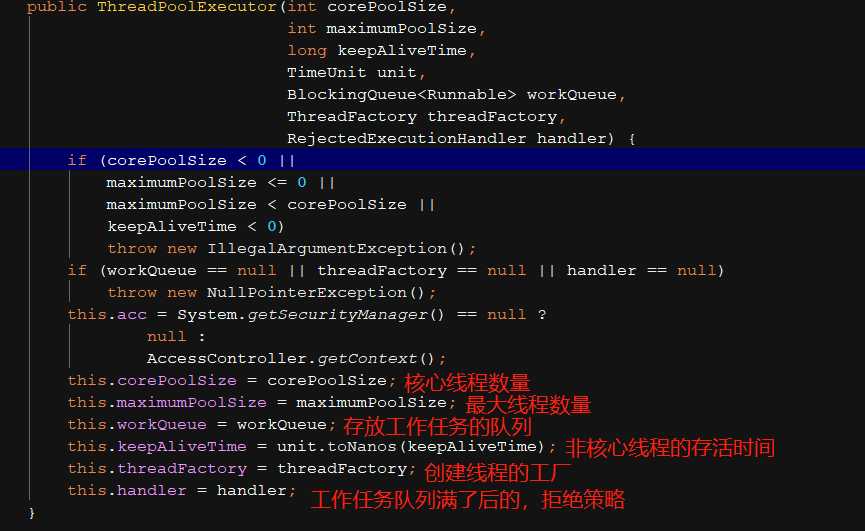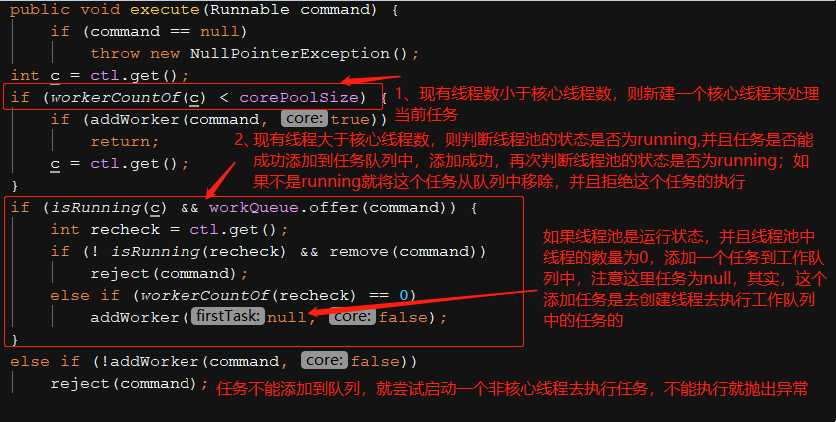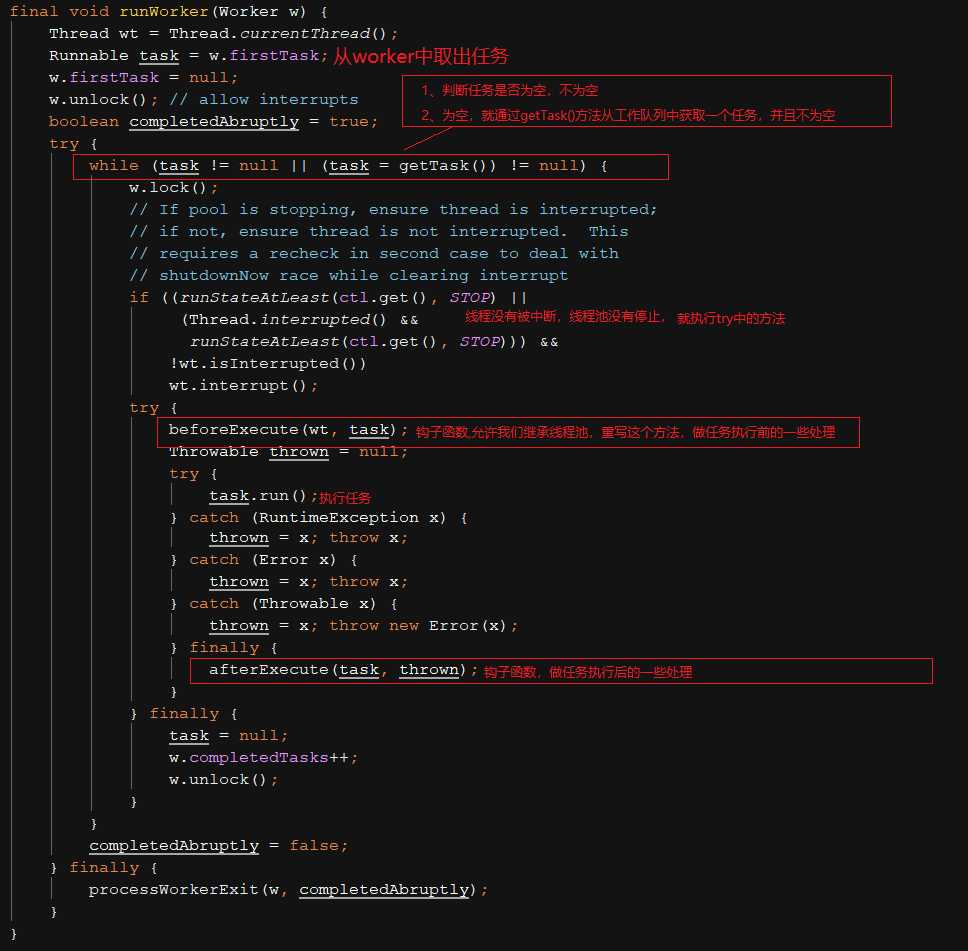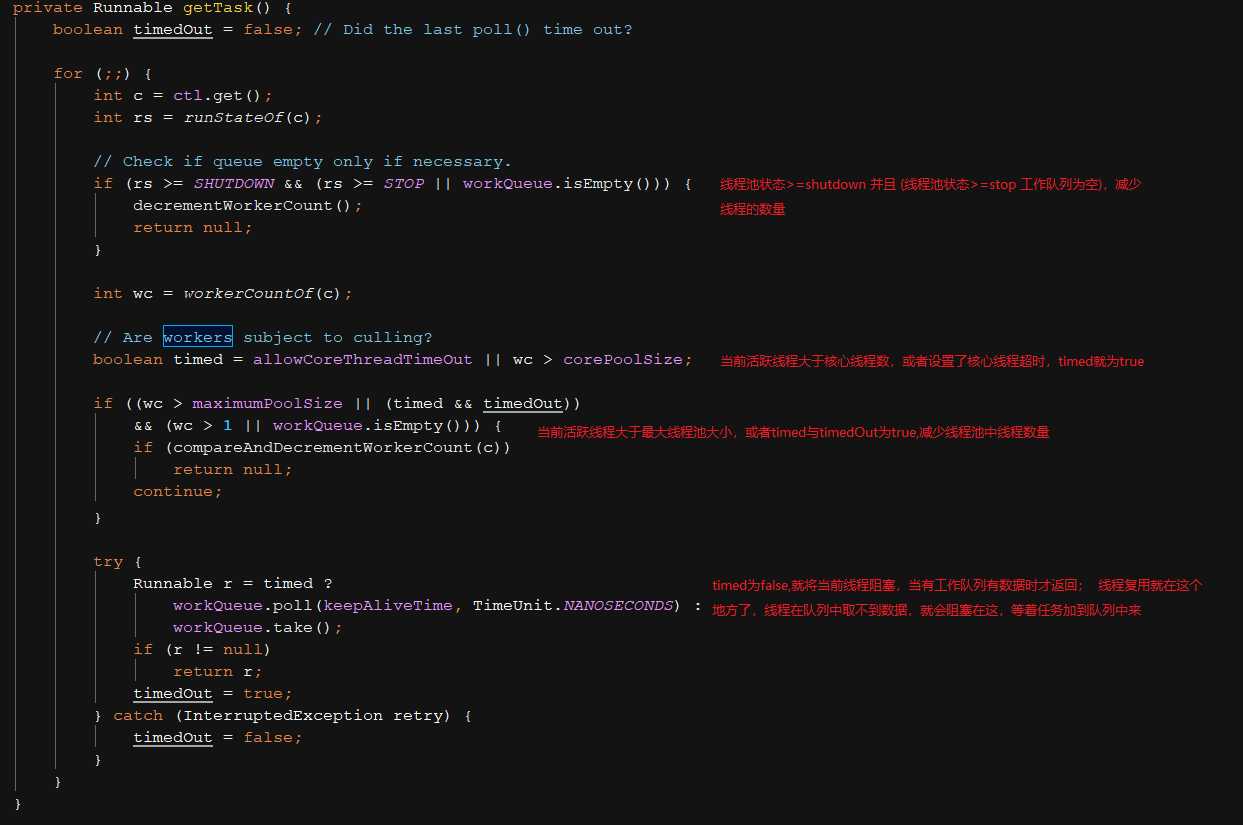标签:时间设置 runnable run inf 回收 工作任务 executors nbsp future
工作中用过线程池来进行多线程的操作,但是也仅仅是停留在使用方面,没有深入研究,现在通过源码来仔细研究下java的线程池。关于线程池的优缺点就不研究了,直接通过一个源码来看看java中线程池的原理。
使用ThreadPoolExecutor来创建一个线程池
public class MultipleThread {
public static void main(String[] args) {
/**
* 通过ThreadPoolExecutor来创建一个线程池
*
* 我们创建的线程池 核心线程数为10,最大线程数为10,也就是线程池的大小就是为10个线程
*
* 非核心线程的在没有任务执行的时候存活的时间设置为0,时间单位是毫秒(设置为0意味着不过期,不会超时被回收)
*
* LinkedBlockingQueue作为工作队列,用于存储工作任务
*/
ExecutorService executorService = new ThreadPoolExecutor(10, 10,
0L, TimeUnit.MILLISECONDS,
new LinkedBlockingQueue<Runnable>());
Future<?> a = executorService.submit(() ->
System.out.println("当前线程:" + Thread.currentThread().getName())
);
Future<?> aa = executorService.submit(() ->
System.out.println("当前线程:" + Thread.currentThread().getName()));
Future<?> aaa = executorService.submit(() ->
System.out.println("当前线程:" + Thread.currentThread().getName()));
Future<?> aaaa = executorService.submit(() ->
System.out.println("当前线程:" + Thread.currentThread().getName()));
Future<?> aaaaa = executorService.submit(() ->
System.out.println("当前线程:" + Thread.currentThread().getName()));
}
}
我们通过ThreadPoolExecutor的构造函数来看看线程池是怎么创建的

ThreadPoolExecutor构造方法:
提交一个任务

提交任务后,其实是调用execute方法去向工作队列添加任务的,我们接着看这个execute方法的实现。

总结就是:
1、当前活动线程数小于核心线程数,则创建一个核心线程,并执行提交的任务
2、当前活动线程数大于等于核心线程数,并且队列可以添加任务,则将任务添加到队列中去
3、当前活动线程数大于等于核心线程数,并且队列不能添加任务(队列满了),则创建一个非核心线程来处理提交的任务
接下来我们看addWorker这个方法

接下来我们看runWorker方法

我们再看下getTask()方法,这个方法就是线程复用的关键方法。

好了,初步的源码分析就到这儿。
标签:时间设置 runnable run inf 回收 工作任务 executors nbsp future
原文地址:https://www.cnblogs.com/guolinjiang/p/12111281.html